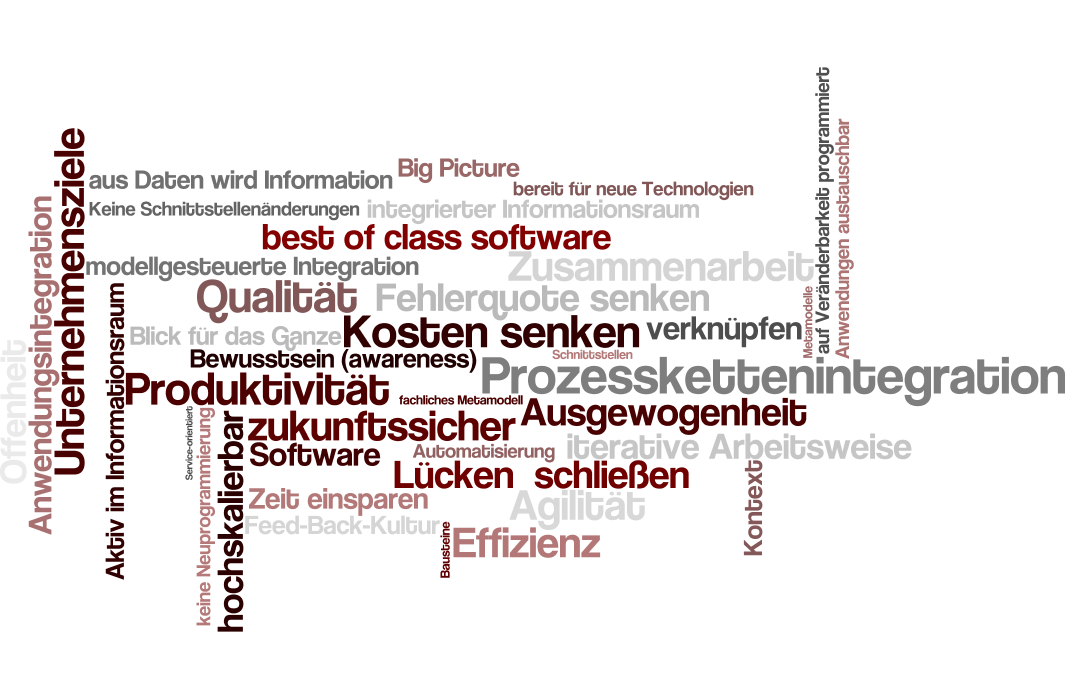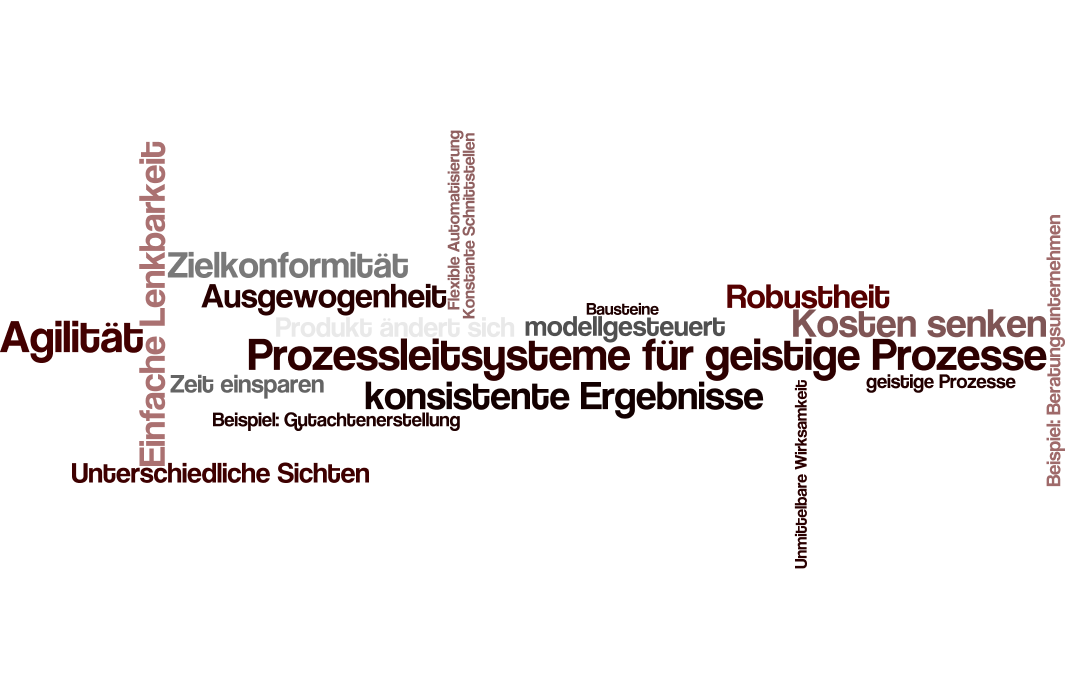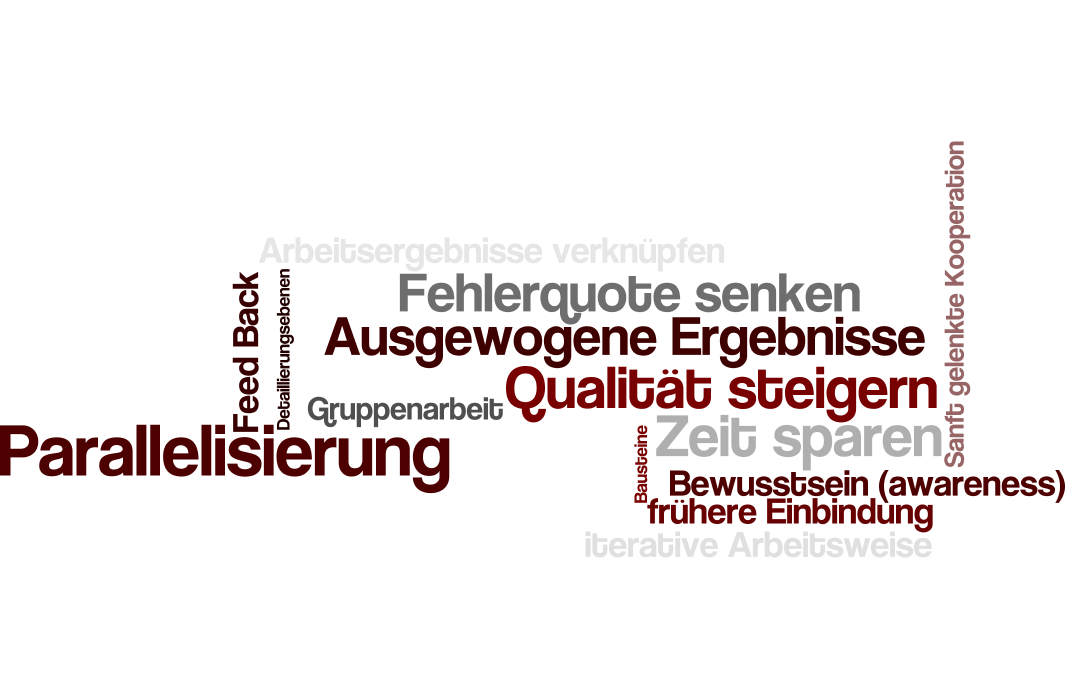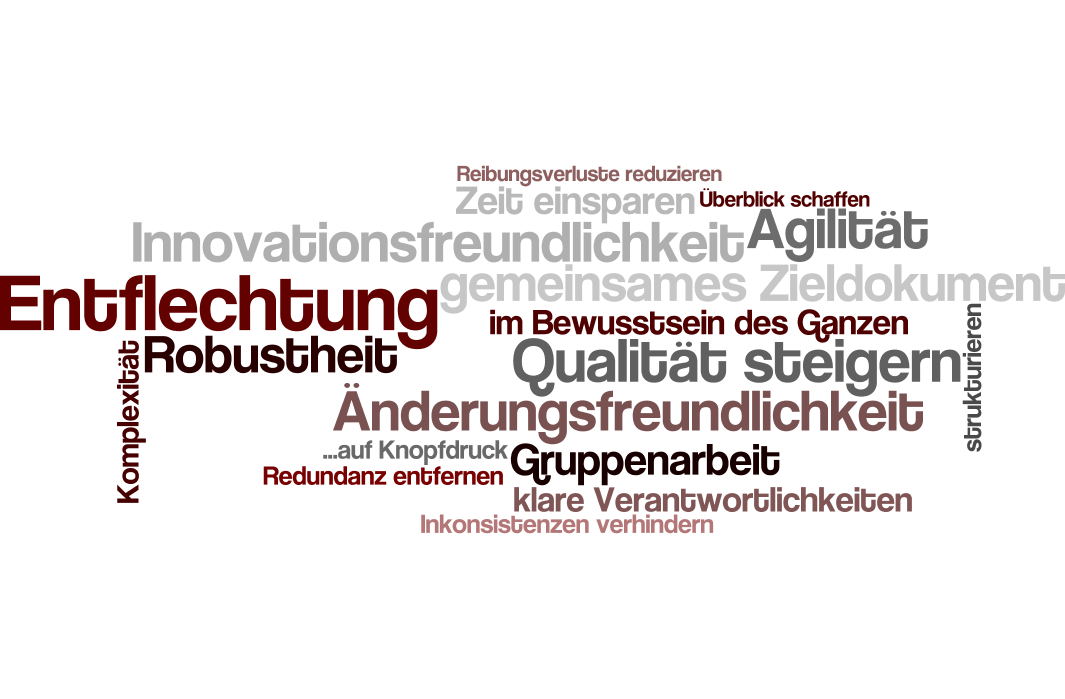



Reducing costs and, at the same time, becoming more agile and achieving better results?
Although this might seem to be like squaring the circle: these goals may well become reality and thereby give your company the all-important decisive competitive edge.
Increase your IT's effectivity and fully exploit the newly gained potential by implementing information spaces! Lead by deploying information technology in an innovative and unique manner.
What does this exactly mean? And what is an information space?
Reducing costs and, at the same time, becoming more agile and achieving better results?
To be specific, you will succeed by implementing the following
four measures:
Measure No. 1: Carry out an information-centered analysis of your business processes! This is the basis for the execution of the subsequent steps.
What does that mean? Information-centered means, that you put a special emphasis on which information is processed in-house. This information will be analyzed and documented in a so-called information model.
Measure No. 2: Create an integrated information space for your business and profit from the arising awareness of information!
What does this mean? Our Whitepaper Information Spaces explains, what information spaces are and why they are so beneficial.
Measure No. 3: Utilize your IT's ability to process information in a manner that's worth the name!
What does this mean? Here is a list of some of the most important steps to be taken:
Measure No. 4: Enable your processes to self-optimize!
How to achieve this? Self-reflective acting needs an effective, IT-supported knowledge- and experience-management.
Fortunately, these goals can most probably be reached without you turning upside down your IT infrastructure. Proceed stepwise and tackle what gives you the desired return on invest within a predictable period of time!
The well-known principle applies here, too: think globally, act locally. We'll be happy to guide and assist you.
You'd appreciate some examples?
Reducing costs and, at the same time, becoming more agile and achieving better results? "All well and good", you might be thinking, "but this still sounds too vague to me — I'd need some examples". These very examples, we'd like to present to you now.
Innovative IT solutions can unveil significant benefits for your business processes. Targeting different problem definitions, the potential will be shown by means of the following
four scenarios.
Exemplary Scenario No. 1: Agile and efficient processes, expected to yield high-grade and balanced results, need flexible integration solutions.
Agile processes need flexible integration solutions; high-grade and well-balanced results can only be achieved based on processes designed holistically, considering the big picture, preferably combined with iterative working methods.
 View the scenario...
View the scenario...
Exemplary Scenario No. 2: Domain meta models — process control systems for intellectual processes.
Time, costs, robustness, agility, balance: model-controled IT solutions are powerful allies.
 View the scenario...
View the scenario...
Exemplary Scenario No. 3: Seize the day — Parallelisation saves time and fosters quality and balance of the results.
Today, many intellectual work steps are still executed strictly sequentially, although they could be parallelized successfully.
 View the scenario...
View the scenario...
Exemplary Scenario No. 4: Many cooks and one broth — How group work can transform from a potential risk into a factor of success.
When multiple (groups of) authors are working on a single complex and comprehensive document, collisions and friction losses may readily result. So, how can co-operative processes be unbundled?
 View the scenario...
View the scenario...
You couldn't find an example from your area of interest? No problem. Tell us about your topics, and we will create a matching exemplary scenario, without any commitment from your side.
"OK! What I've read here is interesting — but, how does this present itself from a strictly monetary point of view?
", you may ask.
All benefits we've propagated so far for deploying integrated information spaces can
be mapped to a monetary benefit. Why? Because they positively affect the profits immediately or at least medium-term, by causing cost reductions and/or additional revenues.
Cost reductions result from reduced work time and thus reduced labour costs or costs for service providers. With technical products, reduced manufacturing costs apply. Higher revenues result from higher product quality and the resulting higher sales numbers. The effect is increased by better strategic business decisions, for instance, concerning products and their market positioning.
On our download page you find a detailed mapping of all kinds of benefits to monetary benefit.
"...and how big is the financial effort to realize an information space in my enterprise, how big are the resulting financial savings, and how long does it take
until this invest pays off ?", you may ask yourself now.
Because information spaces have positive effects in many steps of the process,
also their financial benefit can accumulate to high saving rates ,
while at the same time the size of the invest stays moderate.
But let us leave the abstract level and proceed to concrete numbers!
Request a business case!
We will also gladly send you our generic business case in a spreadsheet document, which will help you getting a first idea of the return-on-invest of our solutions. You can easily adapt it to your business processes' size and complexity level, thus receiving even more meaningful numbers.
Reducing costs and, at the same time, becoming more agile and achieving better results?. Yes, please! We will assist you.
We develop concepts for information processing for all companies dealing with complex information and/or processing diverse tasks. As a rule, conventional solutions are not sufficient to stay consistently competitive in the market. Innovative IT solutions as being propagated here, in contrast may mean the decisive difference.
Learn more about our service offers here.
 Dr. Zimmermann IT Consulting
Dr. Zimmermann IT Consulting
Word clouds are a means of illustrating keywords and their relevance within a given context. For example, the opposite word cloud illustrates our offers to you.
A notion's relevance is represented solely by the font size, not by its color or tone. Moreover, the notion's placement in the word cloud is irrelevant. Without having to read running text, you can take in the word cloud just like a picture, and you can gradually discover its content.
Are you interested in more details? Don't hesitate to contact us! We are looking forward to getting to know you.




